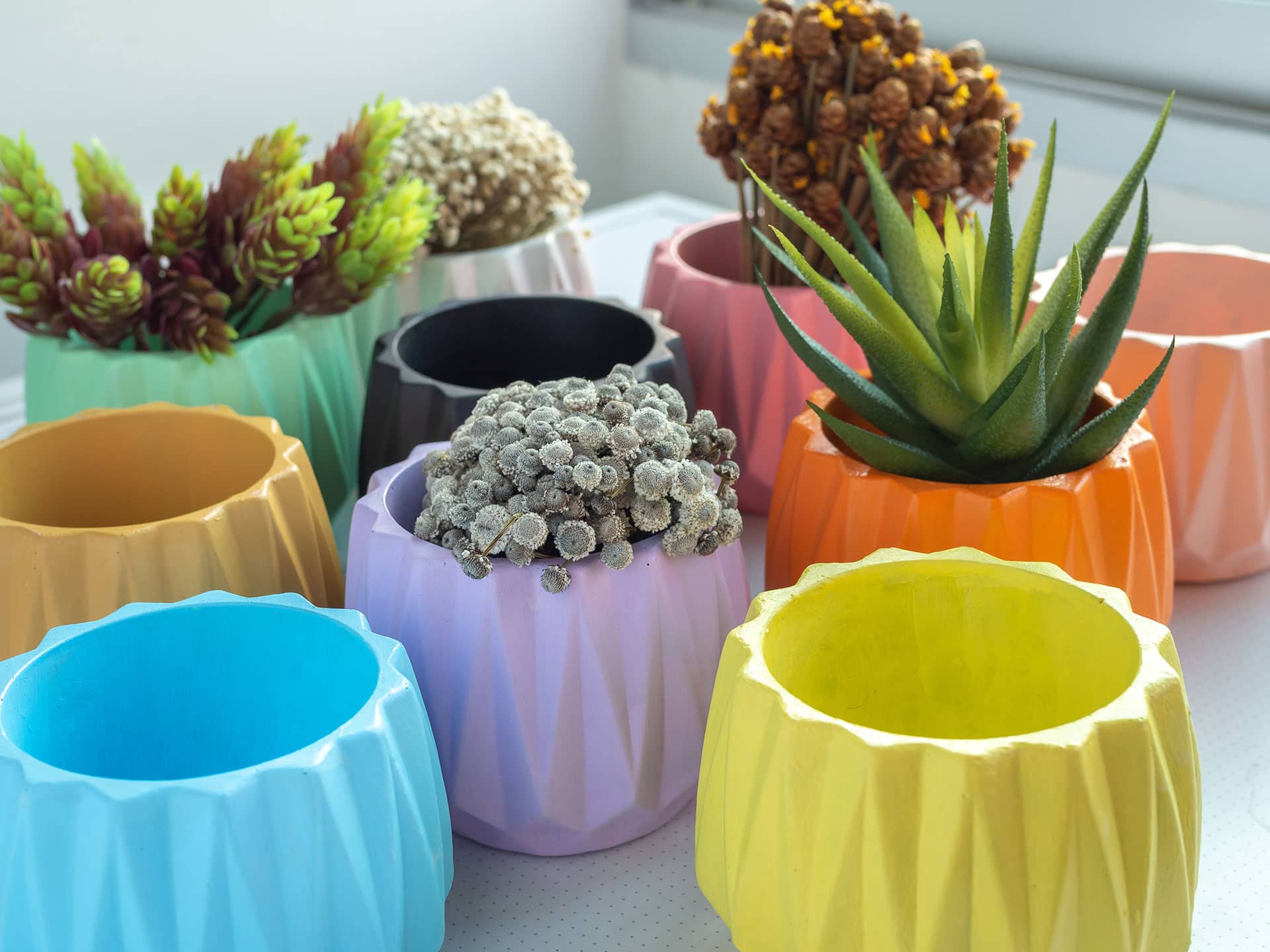Choosing the best indoor plants pots is essential, and it can be a difficult decision to choose the right pot for your plants, especially if you are a new gardener.
Also, if you’ve recently switched to an indoor garden, you may wonder about the best way to choose the pot for your plant.
As a gardener, you know hundreds of plants can help beautify your home or your living environment, and if you want to grow the most beautiful plants for your home or office, you need to select suitable pots to grow them.
There are different varieties of indoor plants pots available in the market to choose from. But which is best for your plants?
Which will give your indoor plants the best root environment and keep them looking their best?
It can be confusing trying to figure out which pot is best for your plant. Most of the time, choosing the right pot is based on trial and error. But once you select the right pot, your plant will enjoy growing in it.
This article explains the best way to choose the pot for your indoor plants, so you can enjoy your indoor garden for years to come.
But before knowing how to select the best pot for your indoor plant, let me know you the different indoor pots for plants available on the market.
Here is a quick overview of the different types of pots you will find in the market and how you should use them.
8. Plastic Pot
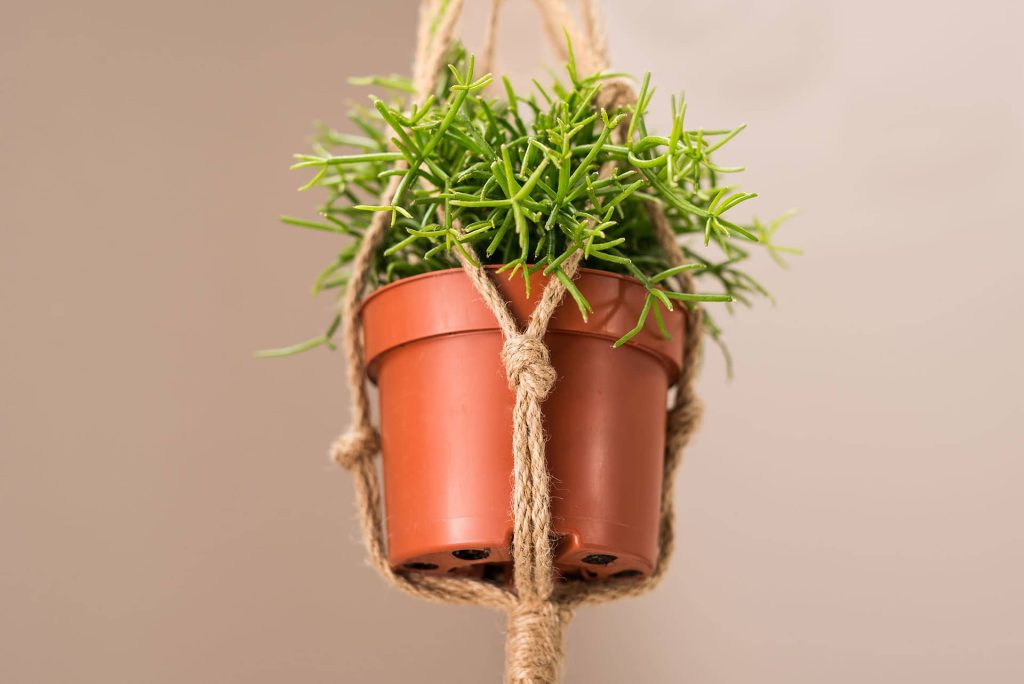
A plastic pot is the most inexpensive pot that you can get. They are the most popular and commonly available pots on the market, and they come with lots of drainage holes in the bottom, which allows water to escape from the pot quickly.
You can get different size options of plastic pots. For those who don’t have a huge space or have a balcony or a terrace, having a plastic pot is very easy to move around. You can easily move your plant from one place to another, growing them in a plastic pot. Plastic pots also have a long life than any other pots.
The only problem or issue with this pot is that it is plastic. Unfortunately, in most cases, it is not even recycled plastic.
7. Terracotta Pot
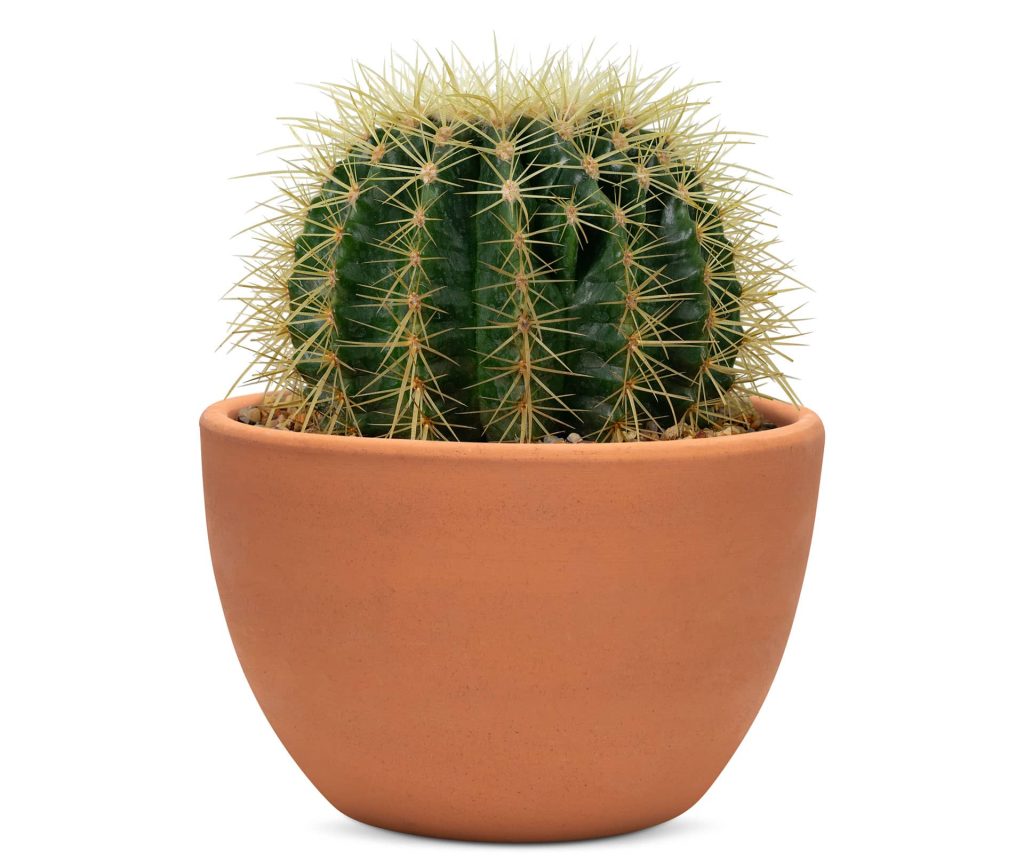
The terracotta pot is a standard planter container, and you can easily find it in all shapes and sizes in many stores. The clay used to create terracotta pots has a high absorption capacity, making them ideal for growing plants that require more water.
You can use the pots for both indoor and outdoor gardening. It is one of the oldest methods of pottery production that is very versatile in design and can be easily found in the home decor industry. They are also an inexpensive option to consider as a garden decoration.
These pots are meant to be functional, but their primary purpose is to provide a beautiful focal point for your garden or patio. They are very popular due to their strong, lightweight, and durability. It is also one of the long-lasting pots that come with drainage holes.
6. Ceramic pot
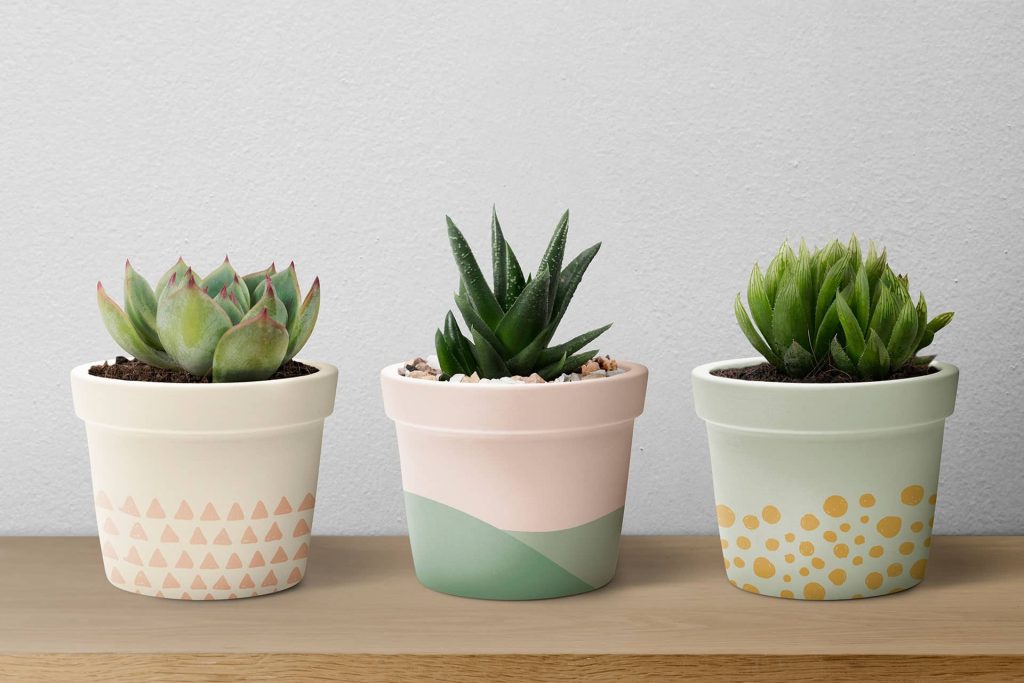
When it comes to making your plants look classy and stylish, get a ceramic pot that comes in different shapes and sizes.
Ceramic makes an excellent home decor piece. People have been using ceramic pots in gardens and kitchens for centuries. They are attractive, available in various colors, and have high endurance and durability.
However, these small ceramic indoor plant pots cannot hold plants with bigger leaves and their roots.
They’re great for people who have difficulty growing plants outside because of weather concerns. Ceramic pots are typically constructed out of clay or porcelain and can heat to the exact temperature necessary to grow plants.
Ceramic pots are available in many different shapes and sizes and come in various designs. Many are made from clay fired at high temperatures, making the pot durable and non-porous, preventing water from seeping through. Make sure to check the drainage hole while buying the pot.
5. Wooden Pot

A wooden pot can be the best choice if you are looking for a unique pot to grow your indoor plants.
Wood is one of the best materials to build pots, and growing plants in a wooden pot is a beautiful way to display indoor plants in your home. In addition, using a wooden pot gives your pot a natural and expensive look.
Many types of wood pots are made from different kinds of wood, including bamboo, cedar, and teak wood. However, choosing one with a good finishing is better because it makes your plant more attractive.
4. Metal Pot

Metal pots are very trendy these days. Many people prefer to use metal pots for growing plants. If you don’t like using using other indoor plants pots, then you should consider growing plants in metal pots.
These pots have a unique look than the traditional plant pots and are mainly used for decorative purposes. Using a metal pot is easy to show off the plants you have in your home. You can find metal pots of different sizes and styles.
You can easily find these pots in the local markets or online stores. These pots are very durable and last for a long time.
3. Fiberglass Pot

In recent years, fiberglass has become one of the most commonly used materials in making products. Fiberglass pots are made from fiberglass, which is a substance that is hard and brittle. They are very easy to clean and available in different colors.
Fiberglass pots are very light in weight and durable, so you can use them over and over again. Since they are lightweight, carrying them around is easy, and you can put them wherever you want. In addition, fiberglass pots are safe to use. They are non-porous and won’t crack or dent easily.
The only problem with fiberglass pots is that they can easily break if they fall off your hand. You can find fiberglass pots at local home improvement stores.
2. Hanging Pots
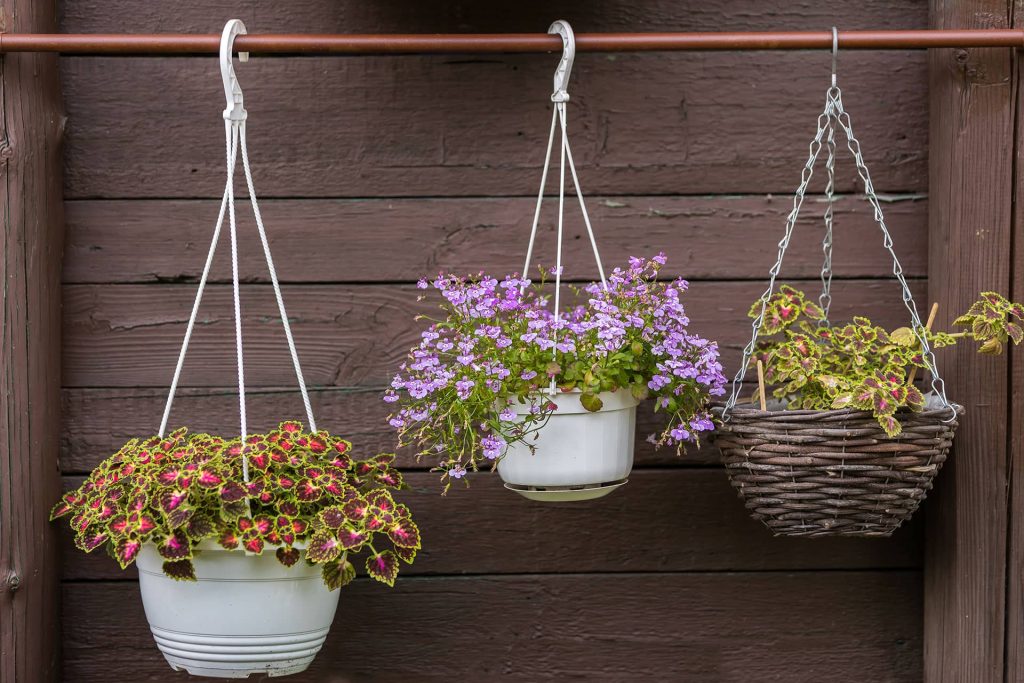
If you own an apartment or house, you probably already know how tough it is to keep plants alive indoors—that’s where hanging pots come in.
Hanging pots are one of the most underrated ways to grow indoor plants and improve the look of your home. If you don’t have a lot of space, try planting indoor plants in hanging pots.
Hanging pots allow plants to grow without getting dried out. It requires less water than floor-based pots and the lack of direct sunlight allows them to grow in areas of lower light intensity, such as under artificial lights.
But hanging pots do have their limitations. For example, they can only be placed on ceilings, and you cannot use them on windowsills or other places that experience a lot of direct sunlight.
1. Pot for climbers
Whether you live in an apartment, a condo, or a large home, indoor climbing plants are a great way to improve the look and feel of your house. They are low-maintenance and require a good amount of light, potting mix soil, and regular watering.
A pot for indoor climbing plants is a great way to extend the life of plants while ensuring they remain healthy.
They have been around for decades, but new varieties of indoor plants pots are being developed that are more attractive and easier to grow than traditional ceramic pots.
If you are interested in growing a climbing plant indoors, several pot shapes and sizes are available. But you may not be sure which is the best choice for your plant.
The best kind of pots for indoor climbing plants are ones that are large enough to hold the plants comfortably and also have enough height to stand upright.
However, if you want to get started with a new indoor climbing plant pot, I suggest you first try to determine what kind of climber you are looking to grow.
Conclusion
In conclusion, Selecting the right indoor plants pots can make all the difference in whether or not your plants grow well or if they die off.
The size of the plant pot will be a significant factor in growing indoor plants. So, you must select a pot that is the right size for your plant and have drainage holes.

